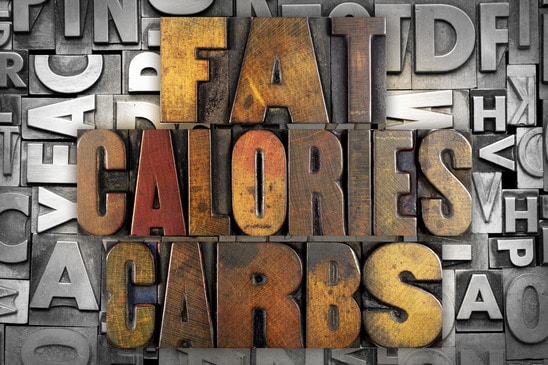For years, carbohydrates have taken blame for obesity. Americans nutritional perceptions have been influenced by low-carbohydrate fad diets for decades dating back to the “meat diet” beginning in the 1940s. Other more modern reduced carbohydrate diets include Atkin’s, stoneage and Paleolithic, “Zone” and “South Beach.” The popularity of these diets encourages Americans to fear carbohydrates.
Scientists also focused on determining whether high carbohydrate diets promote increased insulin release and if this high circulating insulin resulted in higher storage of fat within fat cells and decreased energy expenditure. The increase in the diagnosis of type 2 diabetes, a condition associated with obesity, has also resulted in many patients being counseled to reduce their overall calorie intake and to focus on reducing carbohydrates since this macronutrient is the primary cause of increased blood glucose (sugar).
On the other hand, some may remember that reduction of dietary fat intake was the basis of public health recommendations beginning in the 1980s. At this time, the focus on reducing dietary fat was considered the single most important change to improve diet and health.
So what diet changes should be recommended? Recent studies and systematic reviews of published data demonstrates no one macronutrient is responsible for obesity and that extreme macronutrient manipulation may not be as effective for managing body weight and overall health as previously thought. Ideally, 45 to 65 percent of intake should come from carbohydrates, 20 to 35 percent of intake should come from fats, and 10 to 35 percent of intake should come from proteins every day.
A clinical trial, published in the American Journal of Clinical Nutrition in 2016, showed that a massive shift in dietary fat and carbohydrate distribution resulted in only a small, transient change in resting energy expenditure of about 100kcals/d. In this 8 week trial, 17 overweight and obese male participants were measured continuously for metabolic parameters such as energy expenditure (EE) as the response to diet changes were evaluated. In the first 4 weeks, participants were given a baseline diet (BD) based on the recommended macronutrient balance of 50 percent carbohydrate, 35 percent fat, and 15 percent protein. In the following 4 weeks, participants were given a low-carbohydrate, ketogenic diet (KD) which was 5 percent carbohydrate, 80 percent fat, and 15 percent protein. Both of the diets had the same amount of calories and protein. When the ketogenic diet was introduced, researchers noticed an abrupt increase in energy expenditure and sleeping energy expenditure. As expected, the researchers also noticed a dramatic drop in insulin when the ketogenic diet was initiated. Unexpectedly, the dramatic drop in insulin did not correlate to increases in EE between 300 and 600kcals/d and accelerated body fat loss as suggested in early literature.
Net weight loss after 4 weeks on the BD was .8kg +/- .2kg; net weight loss after 4 weeks on the KD was 2.2kg +/- .3kg. However, when comparing fat mass versus fat-free mass lost, the BD and KD had comparable fat mass losses at .5kg +/- .1kg and .5kg +/- .2kg, respectively. The remainder of weight lost during the KD is most likely attributed to water and muscle mass losses. Therefore, the data from this study does not support the theory that a low-carbohydrate, high-fat diet promotes body fat loss.
Furthermore, data extracted from the UK Biobank was used to determine associations between energy intake (total and individual macronutrients) and adiposity. After adjusting for age, sex, ethnicity, and physical activity, researchers found that those who were obese had an 11.5 percent greater total caloric intake when compared to their normal weight counterparts. More specifically, obese participants had greater intakes of fat, protein, starch and sugar at 14.6, 13.8, 9.5, and 4.7 percent, respectively. This demonstrates that calories from fat were the most contributory factor to increased total caloric intake in this obese population.
Similarly, a systematic literature review of 43 papers found that macronutrient distribution showed no consistent association with weight gain at baseline or weight gain after weight loss. Both high-carbohydrate, low-fat diets and low-carbohydrate, high-fat diets were shown effective for reduction in weight gain following weight loss.
It is important to remember that under certain medical circumstances it may be appropriate to recommend that patients and clients modify their intake of macronutrients; however, the current evidence suggests that maintaining a balance of carbohydrate (45 to 65 percent), protein (20 to 35 percent) and fats (10 to 35 percent) while reducing net calorie intake is recommended.

